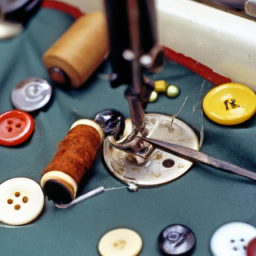
History of Sewing in India

Ancient Origins
Sewing in India dates back to ancient times, with roots deeply embedded in its rich cultural heritage. Textile production and stitching have been an integral part of Indian civilization for centuries.
Archaeological discoveries of hand-spun and hand-woven fabrics as well as intricately stitched garments in the Indus Valley Civilization sites indicate that the art of sewing flourished as early as 2500 BCE.
Traditional Sewing Techniques and Crafts
Over time, various regions in India developed their unique sewing techniques and crafts, which became representative of their cultural identity.
Kantha embroidery, practised in West Bengal, involves stitching together multiple layers of old saris using a running stitch to create beautiful, quilt-like textiles.
The region of Gujarat is famous for its vibrant mirror work, known as “Abhala Bharat,” where pieces of mirror are intricately stitched onto fabrics to produce stunning garments.
Kasuti, a traditional form of embroidery primarily found in Karnataka, involves counting threads and careful stitching to create intricate patterns with colourful threads, adorning sarees and other garments.
Impact of Colonial Rule
The arrival of the British in India during the 17th century brought sewing machines to the country. Initially, these machines were used only for commercial purposes. However, they quickly became widely available and accessible to the general public, leading to an increase in the popularity of sewing.
During the British colonial period, Indian tailors were known for their remarkable skills and attention to detail, catering to the demands of both British officials and wealthy Indian elites. This period saw the incorporation of Western clothing styles and tailoring techniques into traditional Indian garments.
Modern Sewing Industry
Today, sewing is an important part of India’s textile and fashion industry. The country is known worldwide for its intricate embroidery, hand-stitched details, and high-quality craftsmanship.
Indian designers and artisans continue to innovate, combining traditional sewing techniques with contemporary styles to create stunning pieces of clothing.
Sewing has also become a significant source of employment in India, with numerous individuals engaged in garment production, tailoring, and embroidery work across the country.




